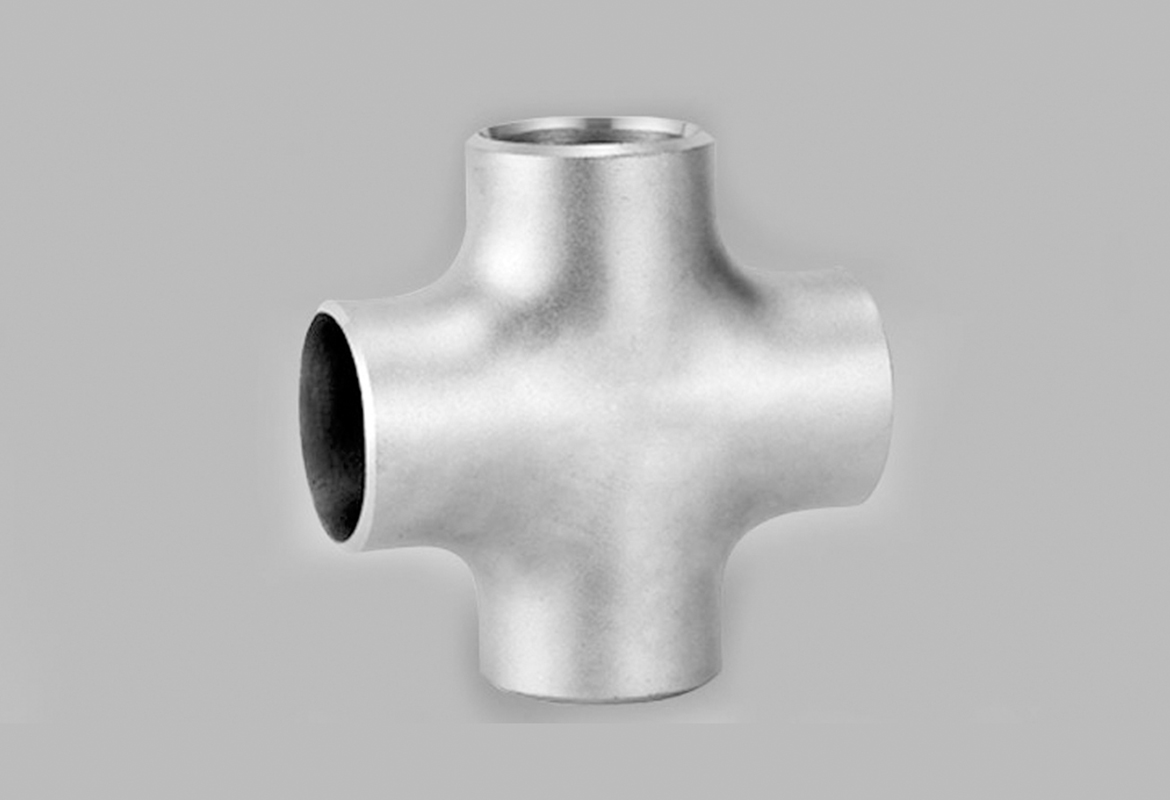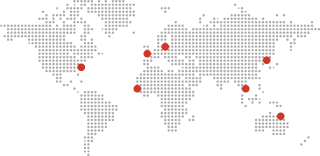La croix de tuyaux en acier est utilisée lorsqu'il y a une branche sur le pipeline principal qui doit être connecté. Lorsque la taille de la branche est la même que le tuyau d'en-tête est utilisé et lorsque la taille de la branche est inférieure à la taille de l'en-tête, alors, Une croix inégale est meilleure. Notre entreprise applique l'hydroformage et la formation de presse à chaud pour fabriquer des croisements en acier qui sont faits de tuyaux sans couture. L'hydroformage peut compléter la forme de la forme de croix en acier à la fois, obtenant ainsi une grande efficacité.
Les matériaux pour la fabrication de notre croix de tuyaux sont souvent en acier à faible teneur en carbone, Acier à faible alliage et acier inoxydable pour filtrer la tendance du durcissement. Cependant, Si la technologie de formation à chaud est adoptée et que l'équipement requis est de petit tonnage. En plus, De grand diamètre et une grande épaisseur de paroi.
L'épaisseur de paroi maximale de la croix de tuyaux en acier est 150 MM et certains numéros d'horaire sont sch10, sch20, sch30, norme, sch40, sch60, xs, sch80, sch100, sch120, sch140, sch160, xxs, sch5s, sch20, sch40 et sch80. Notre croix en acier et les raccords de tuyaux associés sont largement utilisés en électricité, essence, pétrochimique, bâtiment des navires, réseau d'approvisionnement en chaleur, Faire du papier et industries métallurgiques entre autres.
Taille
Croix de tuyaux sans couture: 1/2″~ 24″ DN15 ~ DN600
Croix de tuyaux soudés: 24 “~60” DN600 ~ DN1500
Épaisseur de paroi
Sk10, sch20, sch30, norme, sch40, sch60, xs, sch80, sch100,
sch120, sch140, sch160, xxs, sch5s, sch20, sch40, sch80
Épaisseur de paroi maximale: 200mm
Abter Supply peut souvent fournir les articles énumérés ci-dessous pour une livraison le jour même. Grande quantité, tailles personnalisées, Acier au carbone et alliages spéciaux (Alliage 20, Monel, Hastelloy, Inconel, etc.) peut être soumis à un délai plus long pour la livraison.
Raccords de soudure de crosse en acier en carbone
- ASTM A234 Carbon Steel Cross - Raccords de soudure de crosse en carbone et en alliage forgé : Cette spécification couvre les raccords de soudure en carbone et en alliage en acier en alliage de construction transparente et soudée. Il s'agit du matériau le plus courant pour les raccords de soudure de crosse en acier en carbone (spécifiquement WPB) et est transparent jusqu'à 24 ”, où des diamètres de 24 ”ou plus peuvent être transparents ou soudés. Ces raccords de soudure de bout sont destinés à une tuyauterie de pression et à la fabrication de navires à pression pour un service à des températures modérées et élevées.
- ASTMA860: Cette spécification couvre les raccords de soudure de crosse en acier ferritique à haute résistance de la construction soudée par la fusion en fesse couverte par les dernières révisions d'ASME B16.9 et MSS-SP-75. Ces raccords de soudure de bout sont destinés à une utilisation dans les systèmes de transmission et de distribution de gaz et de pétrole à haute pression.
Raccords de croix de soudage en acier inoxydable
- Raccords de croix de soudure en acier inoxydable sans soudure et soudées: Cette spécification couvre la norme pour les raccords de soudure de crosse en acier inoxydable au-inoxydable en acier inoxydable sans couture pour les applications de tuyauterie de pression.
Articles connexes
Raccords coudés pour tuyaux en acier
Les raccords de tuyaux sont utilisés dans les systèmes de plomberie pour connecter des sections droites de tuyaux ou de tubes, Pour accueillir différentes tailles ou formes, et à d'autres fins telles que la réglementation (ou mesurer) débit de fluide. Ces raccords sont utilisés dans les systèmes de plomberie pour contrôler le transfert d'eau, Déchets de gaz ou de liquide dans les tuyaux ou les systèmes de plomberie dans des environnements domestiques ou commerciaux. Raccords (Types particulièrement rares) nécessiter de l'argent, temps, Matériaux et outils pour installer et constituent une partie importante des systèmes de plomberie et de plomberie. Les raccords de tuyaux communs incluent principalement: bride, coudes, accouplements, des syndicats, bobine, réducteurs, bagues, t-shirts, t-shirts, croix, casquettes, bouchons, barbes et valves. Bien que les vannes soient techniquement des raccords, Ils sont généralement discutés séparément.
Coude de tuyau : acier au carbone, acier allié et acier inoxydable
Les corps des raccords de tuyauterie sont généralement constitués du même matériau de base que le tuyau ou le tube auquel ils sont connectés.: cuivre, acier, PVC, CPVC ou ABS. Tout matériau permis par la plomberie, codes de santé ou du bâtiment (le cas échéant) peut être utilisé, mais il doit être compatible avec les autres matériaux du système, le fluide transporté, et la température et la pression à l'intérieur (et dehors) le système. Raccords en laiton ou en bronze sur cuivre Courant dans les systèmes de plomberie et de plomberie. Résistance au feu, résistance aux chocs, résistance mécanique, l'antivol et d'autres facteurs affectent également le choix du matériau pour les raccords de tuyauterie.
Té de tuyau soudé bout à bout
Matériau Acier inoxydable ASME / ASTM SA / A403 SA / UN 774 WP-S, WP-W, WP-WX, 304, 304L, 316, 316L, 304/304L, 316/316L, DEPUIS 1.4301, DIN1.4306, DEPUIS 1.4401, DEPUIS 1.4404 Dimension ANSI B16.9, ANSI B16.28, MSS-SP-43 Type A, MSS-SP-43 Type B, HE B2312, JIS B2313 Programme d'épaisseur 5S, 10S, 20S, S10, S20, S30, MST, 40S, S40, S60, XS, 80S, S80, S100, S120, S140, S160, XXS et etc..
Réducteur de tuyau – Concentrique et excentrique
Les réducteurs concentriques sont utilisés lorsque la tuyauterie est installée verticalement et du côté refoulement des pompes.. Les réducteurs excentriques sont plus souvent utilisés lorsque la tuyauterie repose sur un support à tubes. A cause du côté plat, l'alignement et le montage sécurisé des tuyaux sur le rack sont plus faciles.
Bouchon de tuyau soudé bout à bout, Capuchon soudé bout à bout en acier inoxydable, Bouchons de tuyaux ANSI B16.9
Bouchon à souder bout à bout Nous sommes fabricant de bouchons à souder bout à bout et fournissons tous les programmes dans des types de matériaux tels que l'acier au carbone., acier inoxydable, acier allié. Zizi produit des bouchons de tuyaux en ASME, DEPUIS, JIS et autres normes requises. Le bouchon de tuyau est l'un des raccords de tuyauterie couramment utilisés pour arrêter le fluide en recouvrant l'extrémité du tuyau.. Il est disponible en type à souder bout à bout, type de soudure par emboîtement et type fileté, et le capuchon soudé bout à bout est plus populaire en raison de ses bonnes performances, connexion stable et large plage de sélection de dimensions.
Cintre et support à ressort
Type A- Utilisé là où un espace libre suffisant est disponible. Une élévation spécifique est souhaitable. Tapez B- Utilisé là où la marge est limitée. La fixation de la tête est une seule patte. Tapez C- Utilisé là où la marge est limitée. La fixation de la tête se fait avec des pattes côte à côte








